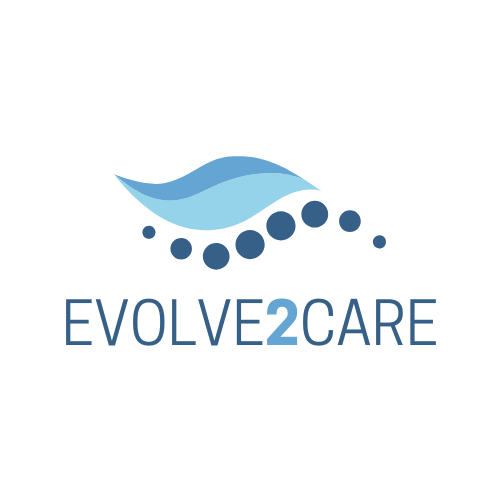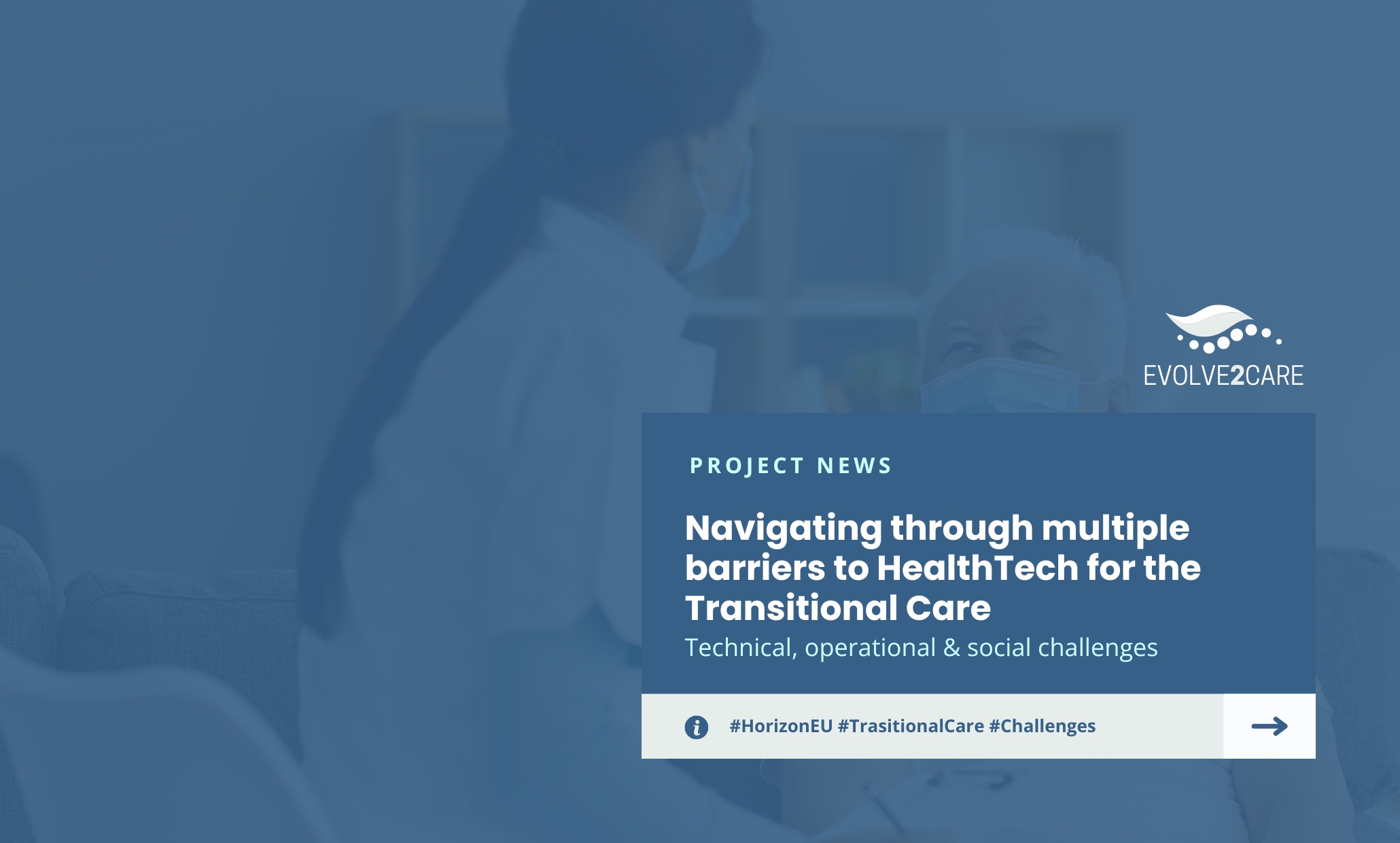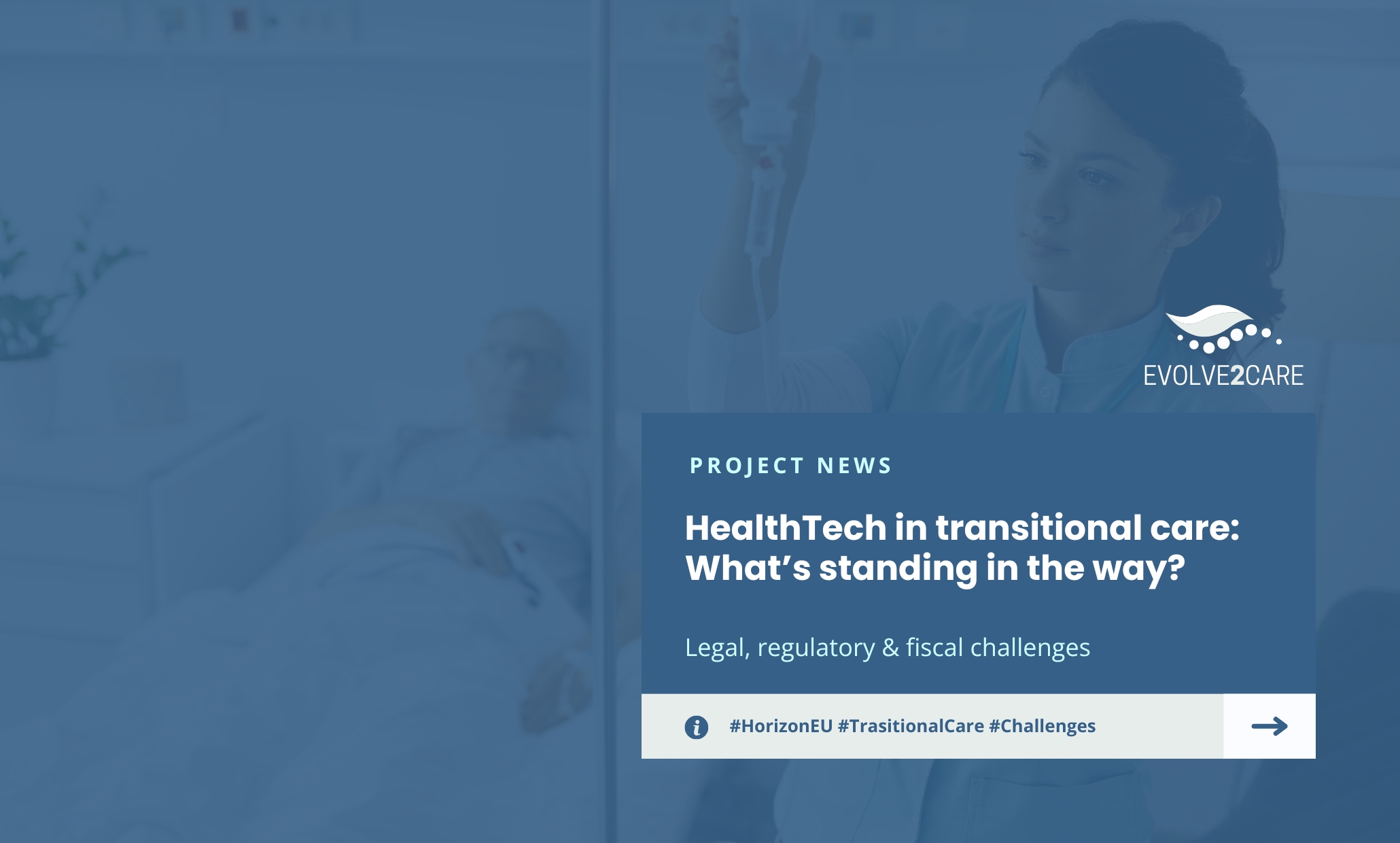While HealthTech holds immense potential to transform transitional care, the challenges don’t stop at legal, regulatory, and fiscal barriers. Even with clear policies and sustainable funding, technical, operational, social and economic obstacles continue to hinder widespread adoption. Issues like interoperability, provider resistance, and patient trust must also be addressed to ensure these innovations can thrive.
The Evolve2Care Project is committed to tackling these challenges head-on. As outlined in Deliverable D1.1, “Roadmap on Navigating the Complexities of Enabling Innovative Technologies in Transitional Care,” a structured approach is needed to help stakeholders—healthcare providers, innovators, policymakers, and investors—overcome these hurdles. In this second part, we dive into the technical, operational, social and economic factors that stand in the way of seamless HealthTech integration.
3. Technical Challenges
Integrating HealthTech innovations into existing healthcare systems brings various technical hurdles that must be resolved for well-tempered implementation.
Interoperability Issues
HealthTech solutions rely on seamless data exchange between electronic health records (EHRs), diagnostic tools, and monitoring devices. However, varying formats and standards create inefficiencies, errors, and delays, making it difficult to ensure continuity of care.
Scalability and Customization
Innovators face challenges in making HealthTech solutions adaptable to different healthcare environments. What works in a small clinic may not suit large hospitals, and vice versa. Additionally, tailoring solutions to meet the diverse needs of patients, healthcare professionals, and institutions remains a key hurdle.
User-Centred Design and Accessibility
HealthTech solutions must prioritize user-friendly design to ensure accessibility for all users, especially patients with limited technical expertise. If a technology is difficult to use or understand, patients may disengage, reducing its impact on transitional care.
4. Operational Challenges
Healthcare providers often struggle to integrate new HealthTech solutions, especially in transitional care, where continuity is key.
Integration into Existing Care Pathways
Integrating new technologies into healthcare workflows is challenging, often facing resistance due to changes in care pathways. Successful adoption requires effective change management and alignment with existing processes.
Training and Support for Healthcare Professionals
Lack of adequate training hinders the effective use of new tools. Comprehensive training programs and ongoing technical support ensure that healthcare professionals can confidently integrate new technologies into their practice.
Patient Engagement and Adoption
For HealthTech solutions to succeed, patients must understand and engage with them. User-friendly design, patient education, and trust-building are essential to driving adoption and achieving better health outcomes.
5. Economic and Social Challenges
Beyond legal, regulatory, fiscal, technical and operational hurdles, economic and social factors also impact the success of HealthTech innovations in transitional care.
Economic Viability and Long-Term Sustainability
Many stakeholders have raised concerns about the long-term sustainability of HealthTech solutions. Ensuring cost-effectiveness in improving patient outcomes and reducing healthcare costs is crucial. A thorough evaluation of their economic impact is necessary to align with healthcare system budgets and ensure financial viability.
Social Acceptance and Trust
Public trust is essential for the adoption of HealthTech solutions. Concerns about data privacy, care dehumanization, and potential misuse of patient information must be addressed through trust in HealthTech solutions.
What needs to be done to overcome these hurdles?
Overcoming these challenges requires collaboration between innovators, healthcare providers, policymakers, and regulators. By addressing legal, financial, technical, operational, and social barriers, stakeholders can create an ecosystem where HealthTech innovations thrive.
Evolve2Care is committed to driving change—because better technology means better outcomes for patients and a more efficient healthcare system.


